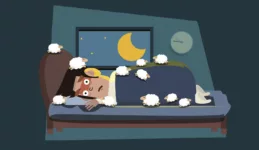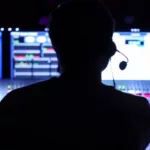The National Sleep Foundation defines insomnia as a condition wherein a person has difficulty in falling asleep or staying asleep. A recent study has indicated that close to 25% of adult population has complained of sleeping difficulty, of which around 6-10% have been diagnosed with insomnia. A severe public health concern, insomnia can be a tricky and complex condition as apart from sleeping issues, it also manifests in physiological, psychological and emotional issues. According to a recent research, the insomnia treatment market is anticipated to register a promising CAGR of 5.2% by 2026. In terms of value, the market valuation is estimated to be worth US$ 7.5 billion.
Doctors for insomnia treatment, understandably, do not have a many option other than relying on pharmaceutical options including ‘Z-class’ sleep medicines such as Sonata, Lunesta, and Ambien. However, these prescription drugs, owing to their somewhat psychotic after effect, have received numerous complaints in recent years. Understandably, a number of patients are opting for non-pharmacological ways for insomnia treatment along with other ways including cognitive behavioral therapy and other drug-free alternatives. To this demand, sleep technology is the answer.
Demand for ‘Active Sleep Technology’ Increasing
Recently, the world’s largest expo for consumer technology- The International Consumer Electronics Show (CES) exhibited a whole lot of sleep-related technological innovations from smart beds, sleep trackers to pajamas that induces sleep. However, there has been a growing concern regarding wearable trackers owing to their ‘passive’ nature. Sleep trackers only monitors and analyses the sleeping patterns without actually enhancing sleep. This led to the emergence of ‘active sleep technology’ for insomnia treatment that double up as sleep trackers and also facilitate relaxation and improved sleep. These drug-free ways for insomnia treatment employ techniques such as guided breathing exercises and electrical brain stimulation.
Smart Goggles, Telehealth Are Here to Stay
Smart technology makers are working on active wearable devices for insomnia treatment. Smart goggles is one of them. Once in use, smart goggles trigger specific sleep-inducing patterns in the brain- using light and sound stimulations. These light stimulations in the smart goggles are of a certain wavelength that in turn, stimulates the hypothalamus gland- leading to controlled secretion of melatonin, a hormone responsible for sleeping patterns. Telehealth is another ‘chemical-free’ alternative, wherein patients can communicate with the doctors about their sleep health. Medical practitioners and researchers are likely to focus on telehealth in near future.
Sleep With ‘White Noise’ On
In addition to sleep-inducing wearable gadgets and gizmos, innovators have leveraged the science behind ‘white noise’ and developed a machine that offers nearly 20 variations of digital sounds and 10 fan and ambient sounds- including white, pink, and brown noises for a peaceful sleep. Science says that white noise is steady and captures attention with having to really focus and eliminates other disruptive sounds like snoring or traffic noise that might disrupt sleep.
But, Will the Clinical World Accept Such Technology?
Medical practitioners believe that sleep technology would only monitor bodily signals and the clinical world is yet to come up with ways to answer the questions these signals bring out. While several devices for insomnia treatment have been shown to be reasonably accurate, it is a long road before sleep technology is accepted by the research and medical community.
Market outlook on insomnia treatment market included in the article are attributed to a recent report by Persistence Market Research. A detailed version of the report is available at https://www.persistencemarketresearch.com/samples/23203








